Medical Center Faculty Members Learn from Immersive Experience at U.S./Mexico Border
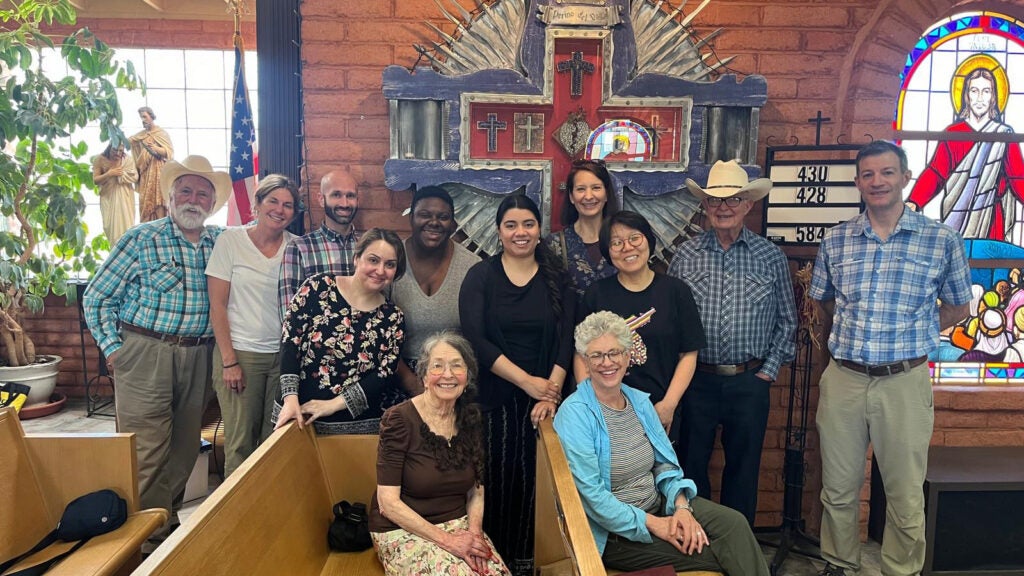
Faculty members Intima Alrimawi (standing fourth from left) and Lois Wessel (seated right) from the School of Nursing and Myriam Vuckovic (standing fourth from right) from the School of Health participated in an immersive experience at the U.S./Mexico border.
(August 1, 2024) — Participating in an immersive experience at the U.S./Mexico border gave faculty members from the School of Nursing and School of Health a better understanding of the immigration process and a renewed appreciation for the humanity and dignity of migrant people.
The immersive experience was organized by Georgetown’s Office of Mission and Ministry and the Center for Social Justice Research, Teaching & Service in partnership with the Kino Border Initiative, a binational Jesuit humanitarian organization that offers direct assistance to migrant people. Participants spent time with migrant people at the Kino Migrant Outreach Center in Nogales, Mexico, hiked in the Arizona desert to learn more about what migrant people experience when crossing the border, met ranchers who live on the border, traveled to Tucson to attend deportation hearings at the federal district court, and visited the Mexican consulate.
“It was more intense than what I expected, but it was really informative in terms of what these immigrants are dealing with,” said Intima Alrimawi, PhD, MPH, MSc, associate professor in the School of Nursing.
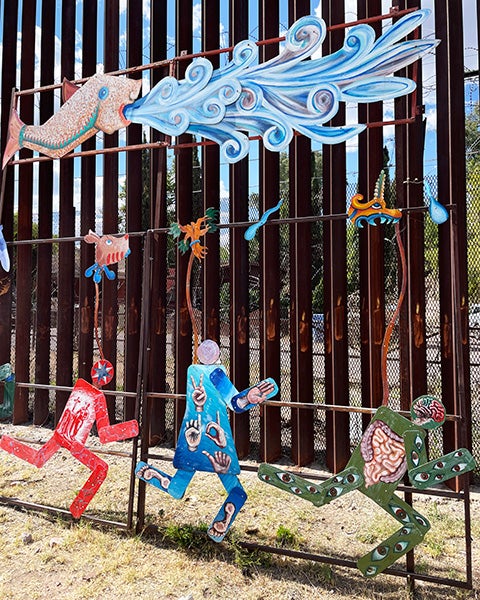
The Mexican side of the border (with sculpture depicting migrants being chased)

The border from the U.S.
Professional and Personal Motivations
Alrimawi’s academic interests in public health and vulnerable populations, and her lived experiences as an immigrant inspired her to participate in the experience.

Intima Alrimawi, PhD, MPH, MSc
“I’m an immigrant myself, but my journey was not that difficult,” she said. “I had to wait a long time but I did not have to suffer. Hearing [the migrants’] stories, they really had to suffer and it was insightful hearing how difficult and painful their experiences can be.”
While Lois A. Wessel, DNP, FNP-BC, associate professor in the School of Nursing, works with refugees and asylum seekers in her clinical practice, she wanted to gain a better understanding of the border-crossing process for migrant people.
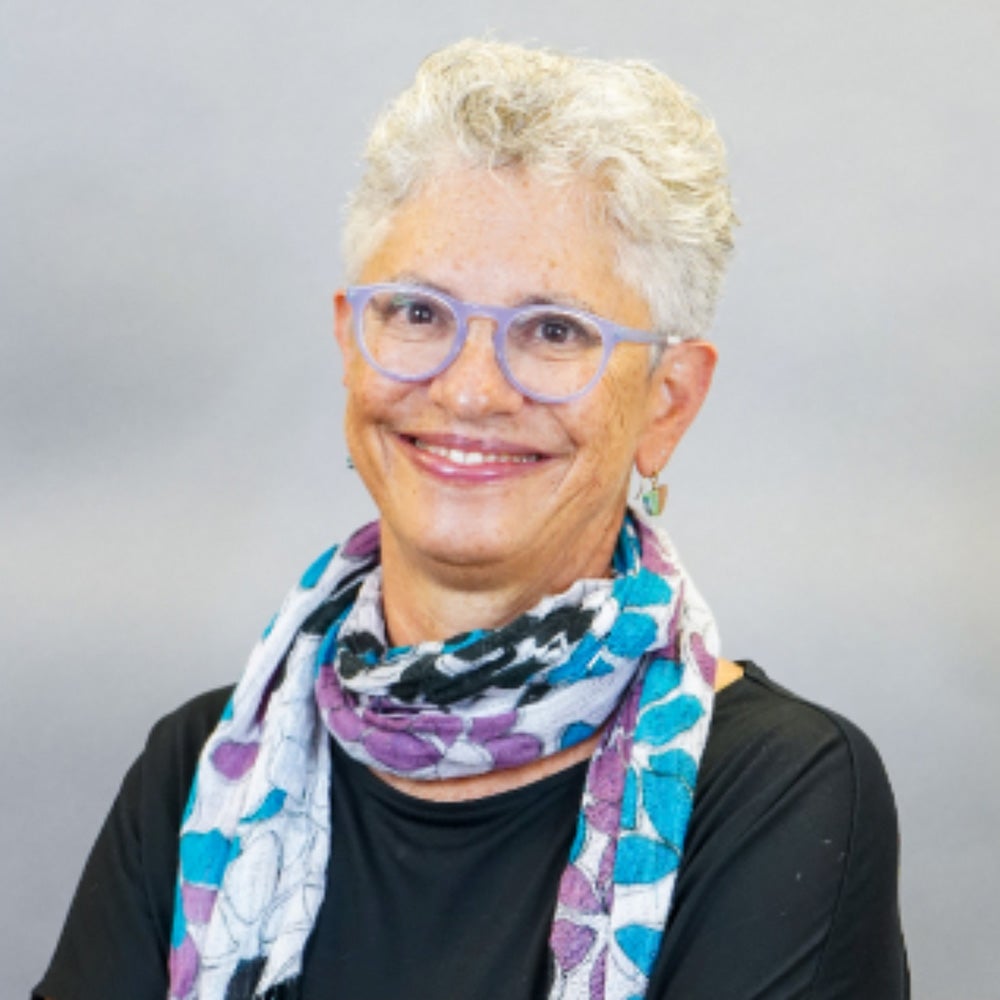
Lois A. Wessel, DNP, FNP-BC
“I feel like a piece that’s always been missing for me is what actually happens at the border,” she said. “Now I feel like I have a bigger appreciation and understanding for what the process was like.”
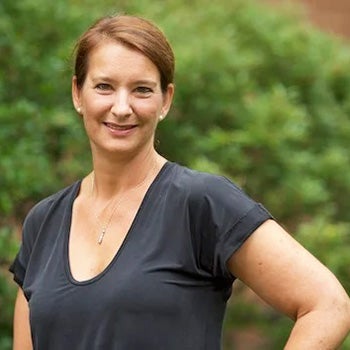
Myriam Vuckovic, PhD, MScPH
Myriam Vuckovic, PhD, MScPH, associate professor in the Department of Global Health at the School of Health, brought her background in American studies and interest in migration issues to the experience. “Different parts of my life converged to make this trip really appealing,” she said.
“There was the intellectual side of it, but that wasn’t really what the trip was about,” Vuckovic added. “It was much more on the emotional level to connect to the topic.”
Challenging Myths About Migrant People and Migration
In talking with migrant people, Vuckovic found that many were driven from their homes by violence, not poverty.
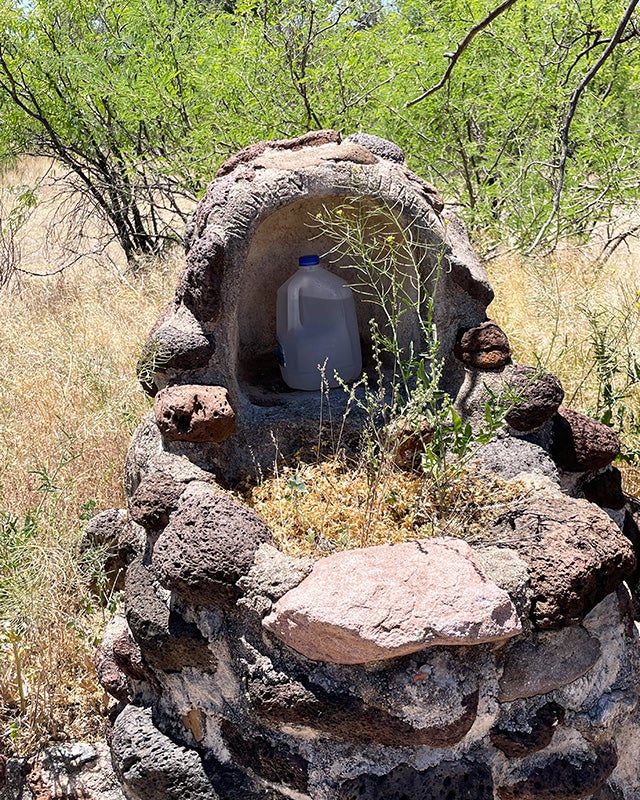
Some ranchers near the border leave water for migrants
“All the people we talked to were professional or had good occupations, so it wasn’t this stereotype of poor people trying to come to the U.S.,” she said. “There is so much cartel violence and extortion going on that people decide to leave their hometowns because it is too dangerous.”
For example, a migrant person said that he had been shot by gang members from drug cartels who threatened to harm his family, Alrimawi recalled. “It was a tough story to hear,” she said. “They are just trying to live a peaceful life.”
Wessel learned that increasing restrictions at ports of entry pushes migrant people to cross the border with help from “coyotes” who work with drug cartels to smuggle goods and people into the U.S. illegally. “I really had no idea how much of the passing between ports is run by cartels,” she said.
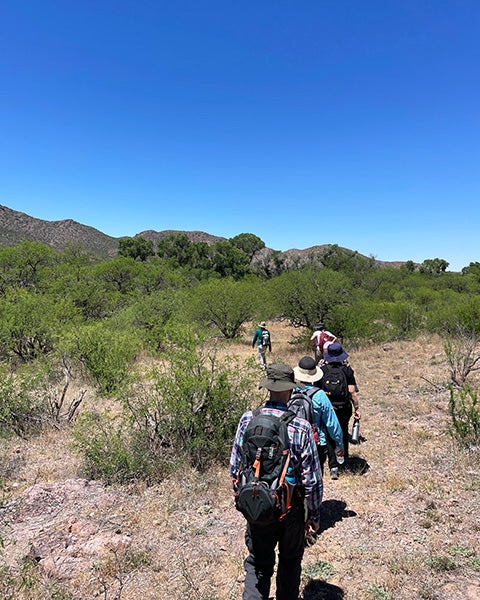
Faculty hiked in the desert.
Increasing restrictions at ports of entry also leads more migrant people to cross the border between ports of entry, which is more dangerous. “They’re in the desert, and many of them die of starvation or dehydration,” Wessel said.
“We did a little desert hike to see the terrain and get a feeling for what it means to cross the border illegally and how hard it is to walk around there,” Vuckovic said. “It’s very rough terrain and you can get lost very easily. And obviously, it’s very hot in the summer but also freezing cold in the winter.”
Different Perspectives
When participants in the immersive experience met with ranchers who live along the border, the ranchers expressed support for both additional border fencing and increasing the number of migrant people allowed to come to the U.S. “I think they were more complex than we expected before,” Vuckovic said. “It was overall very respectful on both sides.”
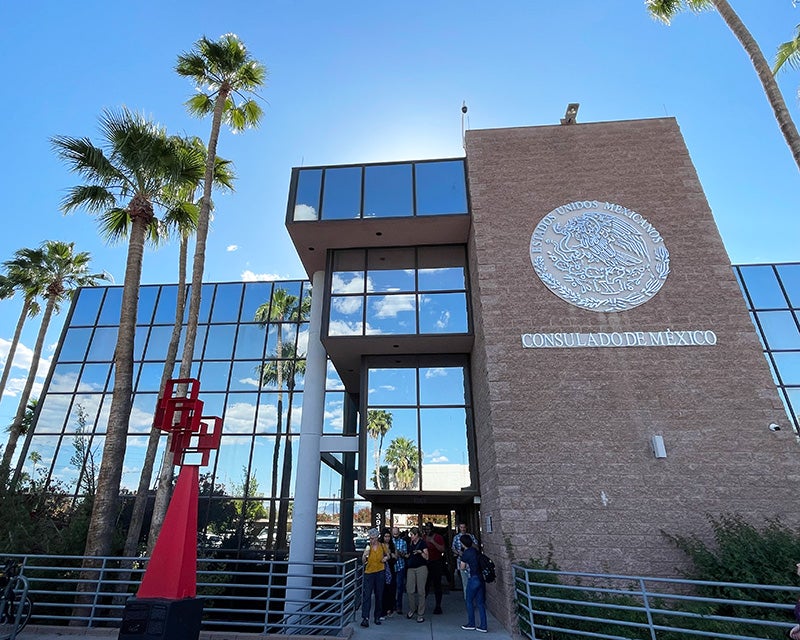
The Mexican consulate in Tucson
The group also visited the Mexican consulate in Tucson, which works with the U.S. Border Patrol by providing call boxes in the desert so migrant people in distress can request assistance.
“It surprised me how much the Mexican consulate that we visited in Tucson was there to support immigrants and refugees with humanitarian support and to prevent deaths from people crossing between ports of entry,” Wessel said.
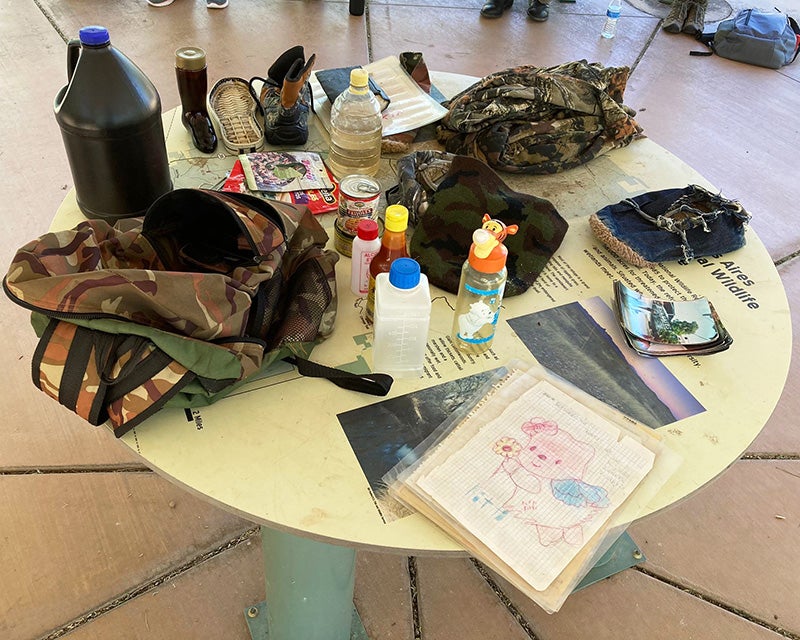
A table of migrants’ belongings
The consulate also returns personal belongings to the families of Mexican citizens who are deported and identifies the bodies of migrant people found in the desert. “So many people don’t know what happened to their loved ones who tried to cross,” Vuckovic said. “It was tough, but we could all see the importance of it.”
A Warm Environment for Migrant People
A highlight of the immersive experience for Alrimawi, Vuckovic and Wessel was spending time at the Kino Migrant Outreach Center in Nogales, Mexico, which provides shelter, meals, clothes, medical care and legal assistance for migrant people, as well as technical assistance with CBP One, the U.S. Customs and Border Control app.
“I was extremely impressed,” Vuckovic said. “The atmosphere is so warm and positive despite the heartbreaking stories that people have experienced.”
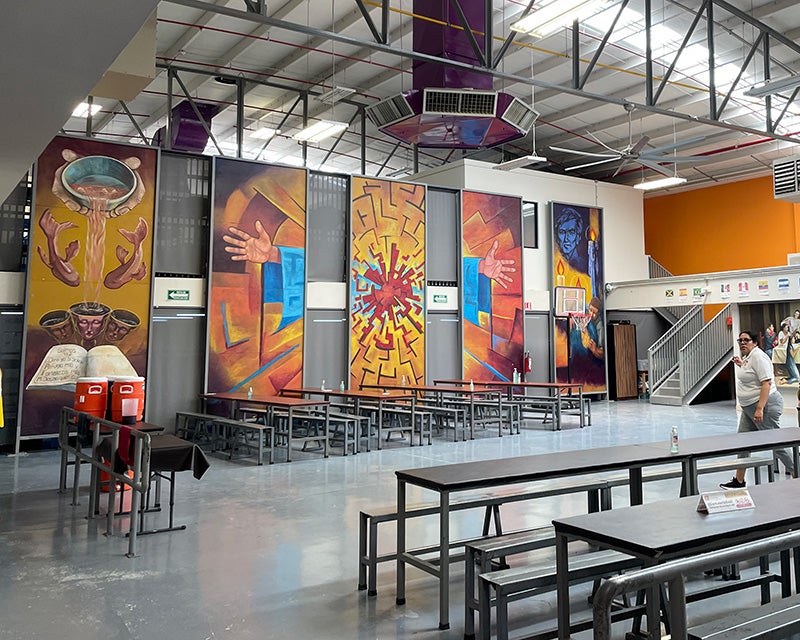
The Kino Migrant Outreach Center in Nogales, Mexico
One thing that stood out to Wessel about the outreach center was that rather than having migrant people line up for food at meal times, they were served by volunteers. “I feel like that is this incredible piece of humanity,” she said. “It felt really lovely that they were sitting down and we were taking care of them.”
Adding to the ambiance, a local musician came to the outreach center in the mornings to perform for the migrant people during breakfast, Vuckovic said. “He comes and he plays so you have this beautiful music while people eat in a very difficult situation of their life,” she said.
In addition to bringing games and coloring books for migrant children at the outreach center, one of the participants in the immersive experience brought nail polish and beauty products to share. “It was so much fun,” Vuckovic said. “We had this beauty salon, and the women and the girls loved it.”
‘Everyone Crossing the Border is a Human Being with a Personal Story’
After the immersive experience, participants planned how to incorporate what they learned into their work. In preparation for her teaching this fall, Vuckovic intends to invite a guest speaker on domestic violence, health and gender in Latin America. She will also use a chapter about gender and migration from “Voices of the Border,” a book of testimonials from migrant people drawn from interviews by staff from the Kino Border Initiative, published by Georgetown University Press in 2022.
In the future, Vuckovic is considering creating a course on migration and health, and potentially setting up an experiential learning opportunity for global health students with the Kino Border Initiative.
Alrimawi said she intends to add more resources about immigration to her course on public health. “I do research with immigrants, but now I have a deeper understanding about where they come from and the process they go through,” she said.
Ultimately, the immersive experience reminded participants of the migrants’ humanity. “Everyone crossing the border is a human being with a personal story,” Wessel said. “We need to respect them and look at them as individuals.”
Kat Zambon
GUMC Communications
